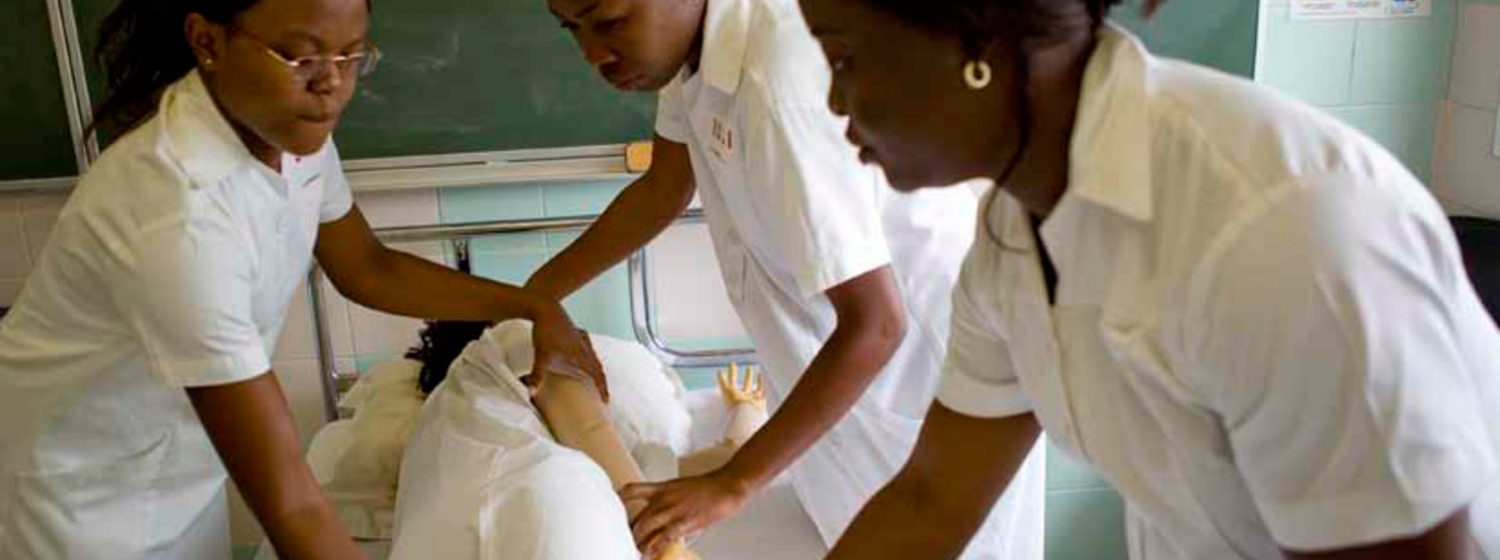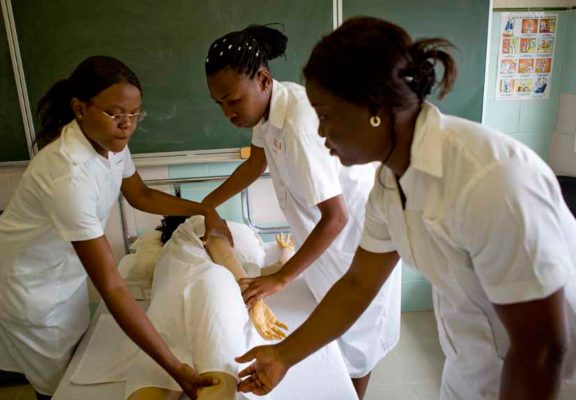

AHO alarmed by rates of cervical cancer amongst African women
Date: 20 March 2019
Author: AHO Press Office
Cervical cancer is caused by the sexually transmitted human papillomavirus (HPV), which is the most common viral infection of the reproductive tract. It affects younger age groups as a result of early sexual activity, multiple sexual partners, and exposure to other sexually transmitted infections such as HIV.
There are more than 100 types of HPV, of which at least 13 are cancer-causing. Two types of HPV cause 70% of all cervical cancer. Most sexually active men and women will be infected at some point in their lives with HPV – some may be repeatedly infected.
Africa Health Organisation (AHO) estimates HPV infections cause approximately 71 000 cases of cervical cancer each year in Africa. However, these figures most likely represent a conservative estimate due to the health challenges in health information systems and cancer registries in the Region.
Cervical cancer is a preventable disease. Yet it is the most common cause of cancer in Africa where it accounts for 22% of all female cancers and 12% of all newly diagnosed cancer in both men and women every year. In Africa, 34 out of every 100 000 women are diagnosed with cervical cancer and 23 out of every 100 000 women die from cervical cancer every year.
This figure compares with 7 out of every 100 000 women being diagnosed with cervical cancer and 3 out of every 100 000 women dying of the disease every year in North America. In Africa, most of these women are diagnosed at advanced stage of cancer which is associated with poor outcomes.
There is a safe and very effective vaccine that protects against HPV and it has the potential to prevent one third of all cases of cervical cancer. Two HPV vaccines are certified safe by WHO and are intended for use in girls between age 9 and 13 years. The vaccine produces the highest immune response at this age and it is important to receive the vaccine before exposure to HPV.
Routine cervical cancer screening and early treatment can prevent up to 80% of cervical cancers if abnormali-ties of the cervix are identified at stages when they can be easily treated. AHO recommends screening for all women aged 30–49 years to identify precancerous lesions, which are usually asymptomatic. HPV vaccination is vital but does not replace the necessity of cervical cancer screening and early treatment in women.
It is very important that all women in the target age group are screened, irrespective of their HPV vaccination status, and treated if precancerous lesion is identified. The vast difference in cervical cancer incidence in developing versus developed countries is a reflection of the absence of national cervical cancer screening and treatment programmes in majority of developing countries.
In many parts of Africa, cervical cancers are not identified or treated until advanced stages due to insufficient access to reproductive health care services, effective screening and early treatment.
Approximately one third of all cancers can be prevented. This highlights the importance of legislative and regulatory measures, as well as health promotion interventions that advocate for HPV vaccination, improved access to physical activity and healthy diet, and against tobacco and the harmful use of alcohol.
“Cervical cancer is a preventable disease and affects far too many women in the Africa. There is an urgent need to integrate cancer control programmes into existing primary sexual and reproductive health care services, strengthen multisectoral collaboration, and improve public health awareness in order to tackle this devastating disease,” said Graciano Masauso, AHO Founder, President, Director and CEO.
Strategies to address cervical cancer and achieve treatment for all need to deal with health inequities that arise from the societal conditions in which women are born, grow, live and work to mitigate barriers to childhood development, education, employment, housing and environment. They also need to address cultural and socioeconomic factors that negatively affect cancer screening, early detection and care.
In order to reduce the cervical cancer burden in Africa, AHO will continue to work with Ministries of Health to implement priority cancer prevention and control interventions that cuts across the continuum of prevention, early detection, diagnosis, treatment and palliative care services.
AHO Press Offices

